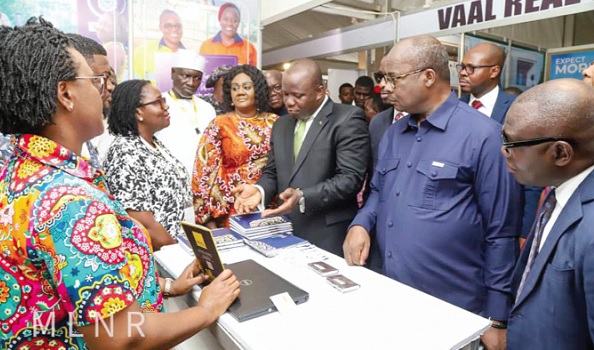The Bank of Ghana (BoG) has added 7.70 tonnes of gold to the country’s reserves as of the end of last month, the Governor of the Bank of Ghana, Dr Ernest Addison, has stated.
The measure, which is part of the central bank’s Domestic Gold Purchase Programme (DGPP), is aimed at increasing gold as the asset cover in the country’s reserves to provide additional buffers to help the economy withstand future economic shocks.
Speaking on the impact and benefits of the DGPP at the 2023 Gold Expo in Takoradi last Saturday, Dr. Addison said at the launch of the DGPP in June 2021, the objective was to double the central bank’s gold reserves which stood at 8.77 tonnes in five years.
Using the spot price of gold to be $63,000 per kg as of yesterday, the Daily Graphic estimates that the 7.70 tonnes of gold could be valued at more than $485 million.
This brings the total gold in the country’s reserves to 16.47 tonnes.
“I am happy to announce that since the inception of the DGPP program in June 2021, the central bank has added more than 7.70 tonnes of monetary gold to the gold reserves as of June 30, 2023,” Dr Addison said.
On the sources of the gold in the reserve, the Governor said mining firms contributed about 80 percent and the remaining 20 percent was from the artisanal and small-scale mining (ASM) sector via an approved aggregator.
The Gold Expo
The Ghana Mining Expo 2023, under the patronage of the Ministry of Lands and Natural Resources and agencies, the Western Regional Coordinating Council, mining companies, and services, the platform has been created to enable a conversation among stakeholders in the mining sub-sector.
The expo was also to boost the interest of investors and promote responsible and safe mining.
The theme for this year was “Sustainable Mineral Resources Development and the Well-being in Mining Communities’’ and it enabled stakeholders to discuss, deliberate, and showcase success stories.
The progress
Dr Addison said the country was on course to more than double the level of the central bank’s gold reserves by the end of this year, and that “we are well ahead of the target initially set.”
The gold purchase program uniquely provides an avenue to organically grow the country’s foreign reserves through the refining of the purchased gold, without distorting incentives of local gold producers, he explained.
Over the medium to long term, the Governor said the program had the potential to support the price stability mandate of the central bank if the extra Ghana cedi liquidity through the domestic gold purchases was mopped up through the open market operations.
The DGPP also supports the ASM sector as the BoG bought gold at competitive prices from them, Dr Addison said.
“This doré gold is stockpiled and shipped to LBMA citified refineries that refine the Dore gold to London Gold Refinery Base,” the Governor said.
A doré bar is a semi-pure alloy of gold and silver.
It is usually created at the site of a mine and then transported to a refinery for further purification.
Benefits
Working with consultants, Positive Impact Sarl (Geneva), Aurum Global Partners, and Ghana Gold Expo Foundation, Dr. Addison said the BoG had developed a responsible sourcing and due diligence framework for the DGPP, which was expected to drive the process forward by promoting responsible and sustainable mining in the domestic ASM sector.
The increased gold reserves would also diversify reserve assets and help improve the risk-adjusted returns for the reserve portfolio, the Governor added.
Aside from that, Dr. Addison said, the central bank would leverage the gold holdings to raise funds at competitive terms for foreign exchange liquidity management, saying, “the DGP program has the potential of catalyzing investments in the gold mining sector in the country”.
The country’s local refineries were also positioning themselves to take advantage of increasing investments in the sector and enhancing revenue from higher value-addition in gold exports, the Governor said.
G4O initiative
On the aspects of the Gold for Oil (G4O) initiative, Governor Addison said the program continued to leverage the existing bank’s DGPP.
He said it was structured around gold being purchased through the Precious Minerals Marketing Company (PMMC) from licensed small-scale miners and Community Mining Schemes to support the importation of petroleum products.
“The introduction of the G4O was critical during the recent economic crisis, especially in the last quarter of 2022,” Dr Addison stated.
He explained that the crisis affected the foreign exchange market and led to very large adjustments in the exchange rate and distorted forward exchange rate quotes, which were used to price petrol.
“Government intervention to directly engage oil producers became critical in obtaining cheaper fuel from G4O arrangements.
It became clear that leveraging the BoG gold for reserves program to support investment in oil would help,” Dr Addison stated.
“These positive developments have contributed to easing price pressures and thereby supporting the central bank’s efforts to bring down the high inflation levels,” the Governor said.







